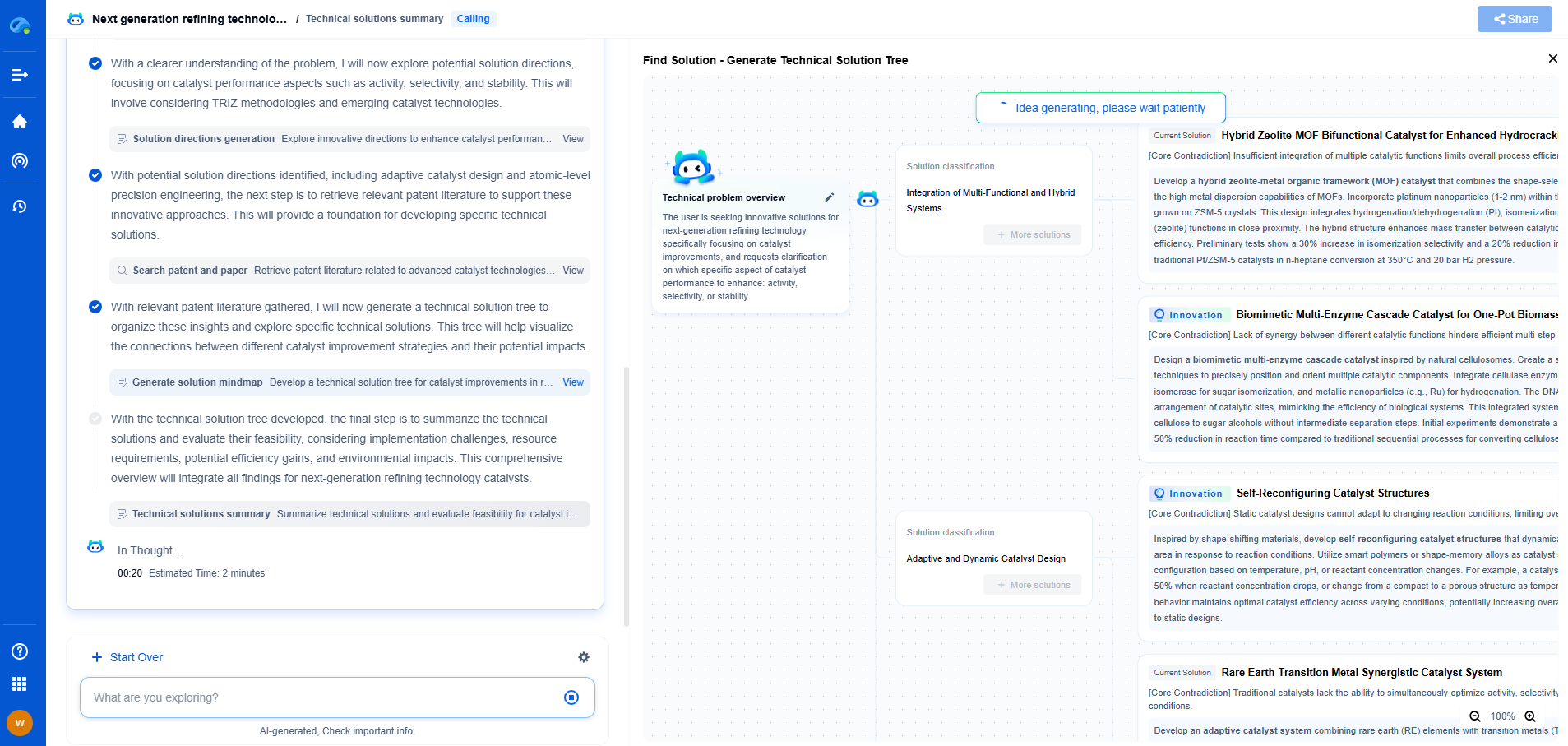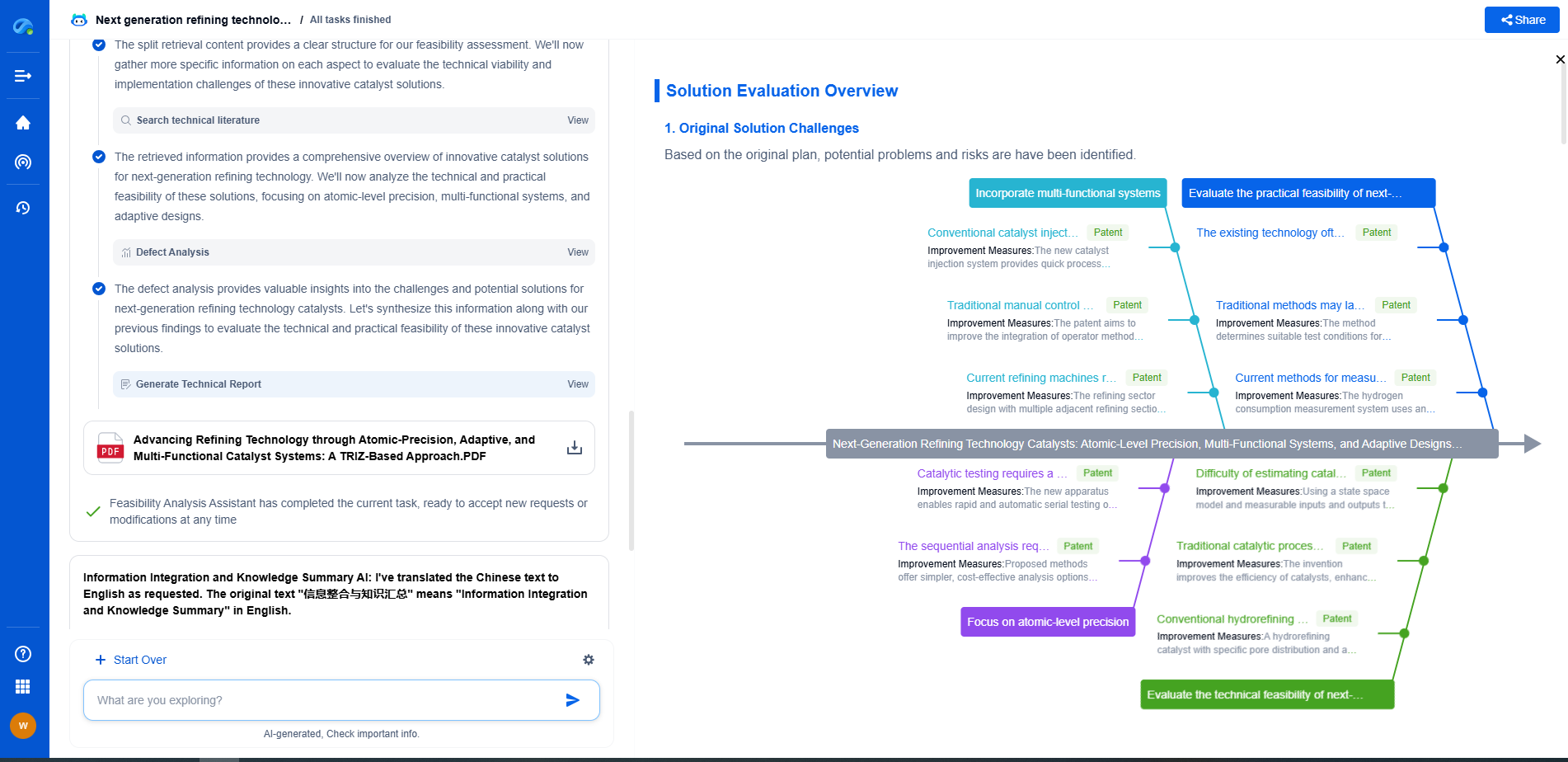How to Reduce False Positives in Acoustic Event Detection (AED) Systems
JUL 16, 2025 |
Acoustic Event Detection (AED) systems have become increasingly vital in various applications, from smart home devices to surveillance systems. However, one persistent challenge that plagues these systems is the occurrence of false positives—situations where the system incorrectly identifies an event as happening when it is not. Reducing false positives is crucial as it enhances the reliability and user trust in AED systems. In this article, we will explore strategies to mitigate false positives and improve the overall performance of AED systems.
Understanding the Causes of False Positives
Before diving into reduction strategies, it's essential to understand the primary causes of false positives in AED systems. Common contributors include background noise interference, overlapping sound events, and limitations in the system's training data. These factors can confuse the system's algorithms, leading it to make incorrect detections. By identifying these causes, developers can design more effective solutions tailored to the specific challenges at hand.
Improving Training Data Quality
Quality training data is the foundation of any robust AED system. One effective way to reduce false positives is by enhancing the dataset used to train the system. This includes incorporating a diverse range of acoustic environments to ensure the system can differentiate between target and non-target sounds effectively. Additionally, annotating the training data with high precision ensures that the system learns to recognize patterns accurately. Balancing the dataset to include both target and non-target sounds can also help in minimizing the likelihood of false positives.
Advanced Signal Processing Techniques
Implementing advanced signal processing techniques can significantly improve AED system performance. Techniques such as noise reduction and filtering can help in minimizing the influence of background noise. Additionally, signal enhancement strategies can be used to highlight target acoustic events while suppressing irrelevant sounds. By refining the input signals, AED systems can better discriminate between actual events and false alarms.
Utilizing Machine Learning and Deep Learning Models
Machine learning and deep learning models have revolutionized AED systems by providing more sophisticated analysis capabilities. Employing advanced models like Convolutional Neural Networks (CNNs) or Recurrent Neural Networks (RNNs) can enhance the system's ability to detect complex patterns in audio signals. These models can learn from vast datasets and improve their accuracy over time, reducing false positives by better understanding the context in which sounds occur.
Contextual Awareness and Environmental Adaptation
Incorporating contextual awareness into AED systems can significantly reduce false positives. By understanding the environment in which the system operates, it can adjust its sensitivity to different sounds accordingly. For instance, a system in an urban setting may need to be more lenient with certain background noises compared to one in a quieter environment. Additionally, adaptive algorithms that learn and adjust to changing acoustic environments can further enhance system reliability.
Continuous Learning and System Updates
An often overlooked strategy is the implementation of continuous learning mechanisms. AED systems should be designed to learn from their mistakes and update their algorithms based on real-world feedback. This can involve user feedback loops, where users flag false positives, allowing the system to adjust its parameters and improve future performance. Regularly updating the system with the latest advancements in technology and research can also help keep false positive rates low.
Conclusion
Reducing false positives in Acoustic Event Detection systems is a multifaceted challenge that requires a combination of high-quality training data, advanced signal processing, and sophisticated machine learning models. By understanding the causes of false positives and employing strategies such as contextual awareness and continuous learning, developers can significantly enhance the reliability of AED systems. As these systems continue to integrate into our daily lives, ensuring their accuracy and dependability is paramount.
In the world of vibration damping, structural health monitoring, and acoustic noise suppression, staying ahead requires more than intuition—it demands constant awareness of material innovations, sensor architectures, and IP trends across mechanical, automotive, aerospace, and building acoustics.
Patsnap Eureka, our intelligent AI assistant built for R&D professionals in high-tech sectors, empowers you with real-time expert-level analysis, technology roadmap exploration, and strategic mapping of core patents—all within a seamless, user-friendly interface.
⚙️ Bring Eureka into your vibration intelligence workflow—and reduce guesswork in your R&D pipeline. Start your free experience today.
- R&D
- Intellectual Property
- Life Sciences
- Materials
- Tech Scout
- Unparalleled Data Quality
- Higher Quality Content
- 60% Fewer Hallucinations
Browse by: Latest US Patents, China's latest patents, Technical Efficacy Thesaurus, Application Domain, Technology Topic, Popular Technical Reports.
© 2025 PatSnap. All rights reserved.Legal|Privacy policy|Modern Slavery Act Transparency Statement|Sitemap|About US| Contact US: help@patsnap.com

